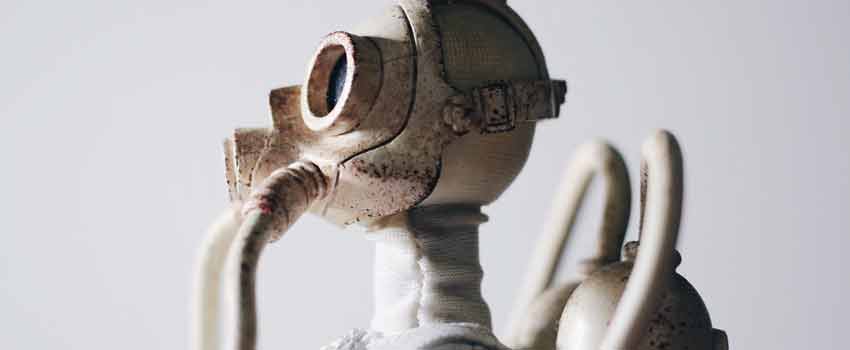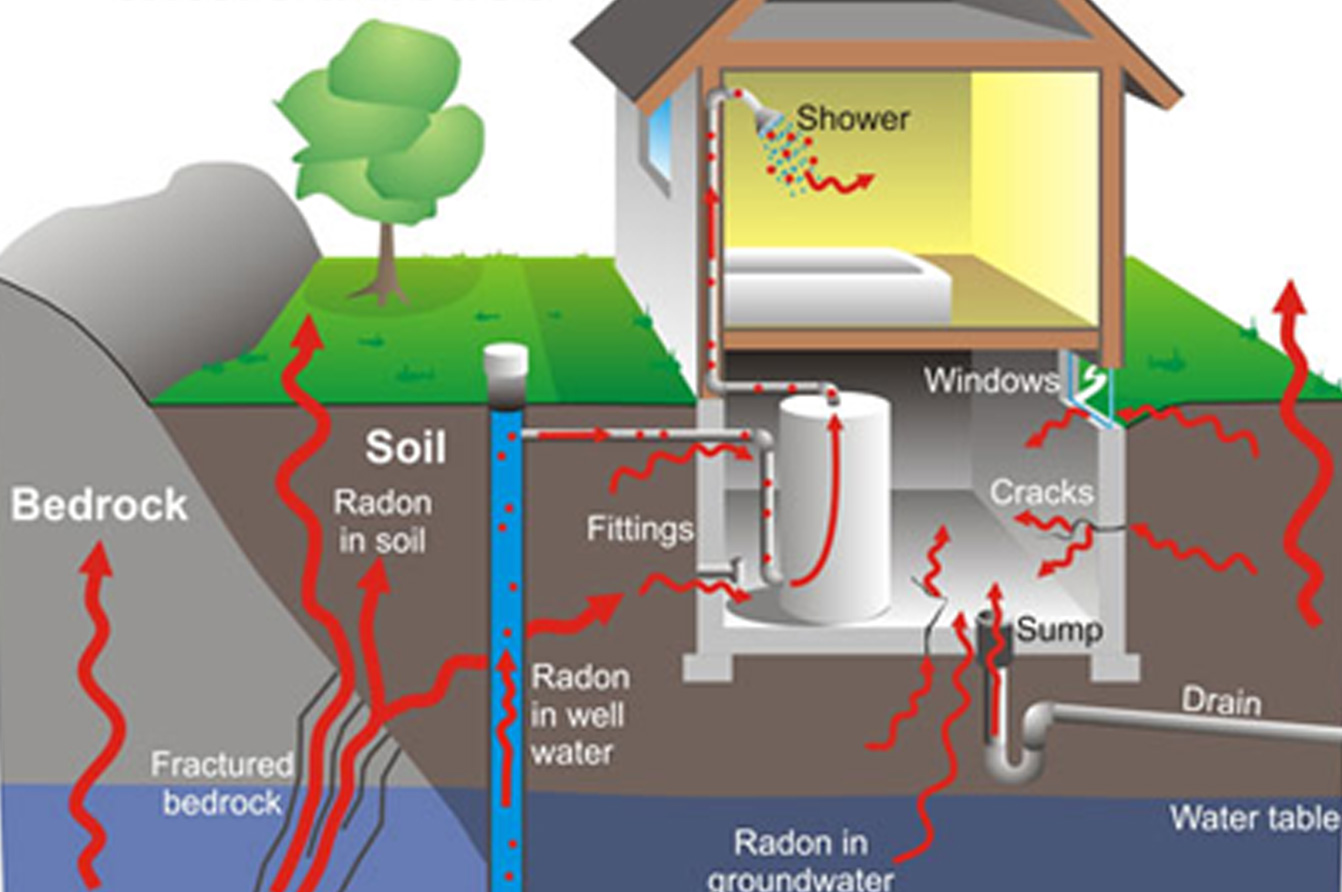
A decade ago, media hype caused both panic and scepticism about the risks and effects of radon gas. Now, better research has made two things clear: Elevated levels of radon over a long period of time can cause lung cancer, and there are effective ways to reduce these levels.
What Is Radon Gas
Radon is the chemical element of atomic number 86. It is a rare radioactive gas belonging to the noble gas series.
Radon is a naturally occurring radioactive gas, which has no smell, colour or taste. It is practically invisible! It comes from the radioactive decay of radium, which is present in small amounts in rocks and earth.
Radon gas from natural sources can accumulate in buildings, especially in confined areas such as attics, basements, sheds and small rooms.
Effects of Radon Gas on Health
Radon is chemically inert, so it can easily escape from the ground into the air where it can be inhaled. The gas is considered to be a health hazard due to its radioactivity. Radon is responsible for the majority of public exposure to ionizing radiation. It is often the single largest contributor to an individual’s radiation dose and is the most variable from location to location.
Radon is present in all air. In outdoor air, radon concentrations are very low. Indoors, however, the concentration of radon can be higher as buildings tend to trap radon. Radon levels are typically very variable, depending on the type of house and the flow of air through the home. There are places where radon levels can be very high, eg. in caves or in poorly ventilated underground mines.
When we breathe in radon, it decays releasing radioactive particles. These particles can cause damage to the lung tissue. Such damage can lead to lung cancer. There is a delay of many years between the initiation of cancer by radiation and its growth to a size which can be observed clinically. The risk of developing lung cancer from exposure to radon depends on how much radon we breathe in. The more radon there is in the air, the bigger the risk. Similarly, the longer we spend breathing in that radon, the bigger the risk. There is also scientific evidence that smoking increases the risk associated with exposure to radon.
How to test for radon gas in your house?
For more information on radon gas, we recommend that you visit the Australian Government’s Radiation Protection special site ARPANSA. The ARPANSA site has a map of radon-prone areas in Australia. It shows the average indoor radon levels for each census district. Some of the areas with the highest radon exposure include Canberra, Braidwood, Goulburn, Eglinton, Dunkeld & Mitchell (suburbs near Bathurst), Bombira and Caerleon. If you are concerned about the radon levels in your home it is easy to have it tested. Radon monitors are available at low cost from ARPANSA.
ARPANSA recommends the following levels:
- 200 Bq m⁻³ for households
- 1000 Bq m⁻³ for workplaces.
ARPANSA has conducted a nationwide survey of radon in homes. This survey found that approximately one in a thousand homes may have high levels of radon. Homes that are well ventilated, made of timber or built on stumps have lower radon levels compared to homes on concrete slabs with brick walls.
The gas moved from the soil into the home. It can seep directly through pores in concreate and gaps in the walls or floors. Any house of any age in any state can have elevated radon levels. It depends on how your specific house interacts with the soils surrounding it. Your neighbour might have completely different levels to you.
How to fix radon gas in your house?
Should the radon level exceed the above levels, the appropriate state, territory or Commonwealth radiation health authority should be contacted for advice. For those homes and workplaces that exceed this Action Level, there are some simple measures that can be taken to bring radon levels down, such as increasing ventilation.
With a SolarVenti® ventilation system, 70-80% of radon gasses can be eliminated from your home.
Fix Radan Exposure In Underground Mine
Uranium mining has the potential to expose workers to higher levels of Radon, especially in underground mines if the air circulation is not well regulated.
Australia’s uranium has been mined since 1954. The nations known uranium resources are the world’s largest, equalling to almost a third of the world total.
SolarVenti can be fitted to underground mines to ensure steady ventilation without electricity. The SolarVenti filters out the airborne particles from natural air before pushing the purified air through the underground mine using positive airflow. Check out how the SolarVenti Pro commercial product can be used in the mining industry.

Case Studies & Reports:
- A Case-Control Study Of Radon & Lung Cancer Among New Jersey Women. August 1989.
- Canadian Lung Cancer Relative Risk from Radon Exposure for Short Periods in Childhood Compared To A Lifetime. Int J Environ Res Public Health. 2013 May; 10(5): 1916–1926. Published online 2013 May 8
- Lung Cancer Screening for people with radon exposure history. Kansas State University.


